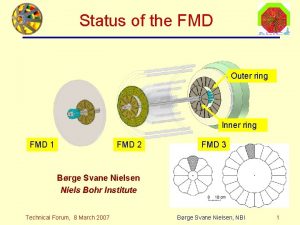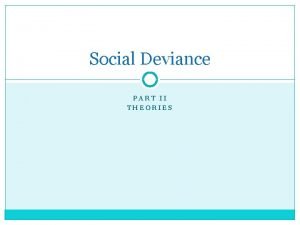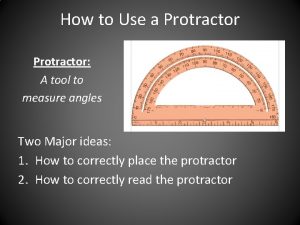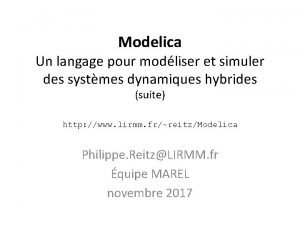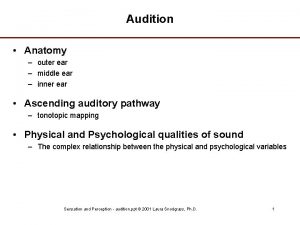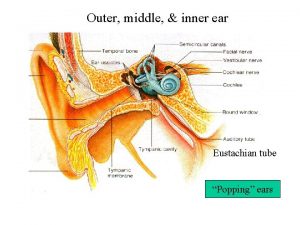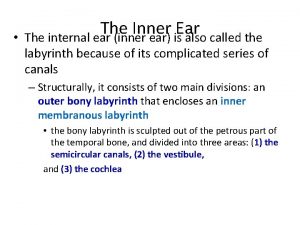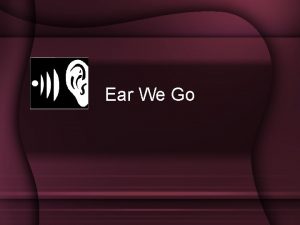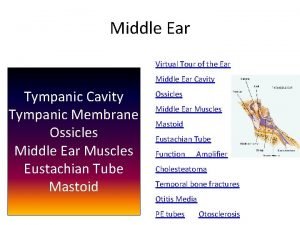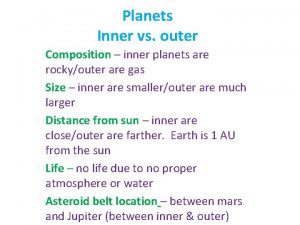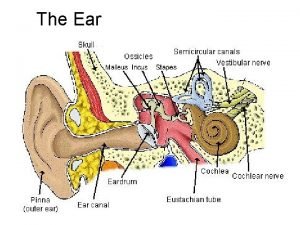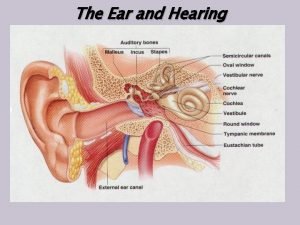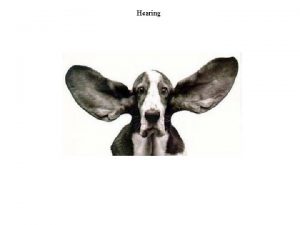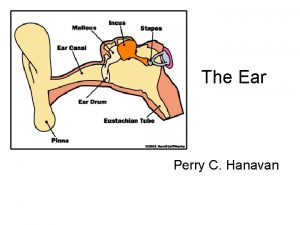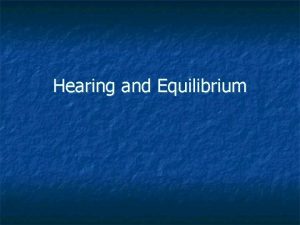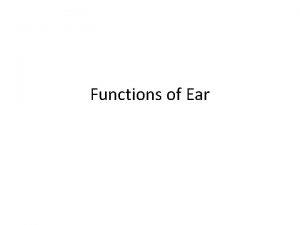Outer middle inner ear Structures of the Ear

























- Slides: 25

Outer, middle, & inner ear Structures of the Ear Eustachian tube “Popping” ears

“Tubes in the Ears” Fluid behind tympanum

Cranial Nerve VIII Ossicles: incus, malleus, stapes. For transmission & amplification Conduction deafness: ossification of ossicle articulations Attenuation reflex protects cochlea from large vibrations

Scala vestibuli Scala media Scala tympani

Endolymph Organ of Corti

Stereocilia with mechanicallygated K+ channels • Open K+ channels • Depolarize • Open Voltagegated Ca++ channels • Release of NT from synaptic vesicles

Mechanosensitive K+ channels in Stereocilia

Activity of Hair Cells • Depolarization leads to more NT release • Hyperpolarization leads to less NT release

• All hair cells nearly identical • Basilar membrane thickens toward the apex

Tonotopy in Cochlea Base Apex

Pitch (frequency) & Intensity • Base. . high pitch (treble) • Apex. . low pitch (bass) • Pitch coded by location of vibrations of Organ of Corti : Which hair cells are stimulated…which set of sensory axons have action potentials • Intensity coded by degree of displacement of stereocilia of hair cells and ultimately the frequency of action potentials in those axons that are active Tonotopy

Fourier Analysis of Complex Waves Complex wave Pure sine waves

Auditory Ranges • Humans: 20 - 20, 000 Hz; optimal 10004000 Hz • Whales: 20 - 100, 000 Hz • Bats: 1500 - 100, 000 Hz • Frogs: 600 - 3000 Hz • Fish: 20 - 3000 Hz • Crickets: 500 - 5000 Hz

Audiogram Decibel = unit for expressing relative loudness on a log scale “Nerve deafness” cause by damage to hair cells.

Pathway to Temporal Lobe In Brainstem Organ of Corti Hair Cells Cochlear Ganglion = Spiral Ganglion • VIII cranial nerve • Medial geniculate nucleus of thalamus Cochlear Nuclei Superior Olive MG of Thalamus Auditory Cortex

Sound Localization • Low frequency by delay in arrival of soundwave between ears • High frequency by attenuation of intensity • Processed in Superior Olive • Practical Applications? L or R speaker w/ hi and lo frequency tone


Fire!

Tonotopy in Auditory Cortex

Organs of Equilibrium Structures of the Ear Utricle & saccule inside

Semicircular Canal • Angular acceleration • 3 planes

Vestibular Apparatus • Hair cells • NT release dependent upon degree of bending of kinocilium and microvilli • For utricle and saccule: otolith membrane • For ampula of semi-circular canals: cupula • Stereocilia in Endolymph (Hi K+, low Na+)



Additional Topics • Information on cochlear implants • Hearing Aids • Understanding Speaker Frequency Response by Polk Audio’s Marketing Manager • Noise cancelling technology
 By listening to my inner defender voice, i can be sure that
By listening to my inner defender voice, i can be sure that Steps to light a bunsen burner
Steps to light a bunsen burner What separates inner and outer planets
What separates inner and outer planets Inner and outer sphere mechanism
Inner and outer sphere mechanism Inner ring and outer ring
Inner ring and outer ring Inner and outer forces
Inner and outer forces Inner and outer controls work against deviance
Inner and outer controls work against deviance How are the inner and outer planets alike
How are the inner and outer planets alike Inner scale outer scale protractor
Inner scale outer scale protractor Characteristics of inner and outer beauty
Characteristics of inner and outer beauty Cbd inner city suburbs
Cbd inner city suburbs What are terrestrial planets made of
What are terrestrial planets made of What separates the inner and outer planets
What separates the inner and outer planets Which seismic waves stay on earth's surface
Which seismic waves stay on earth's surface Socratic seminar ground rules
Socratic seminar ground rules Inner scale outer scale protractor
Inner scale outer scale protractor Crust outer core inner core mantle
Crust outer core inner core mantle Inner terrestrial planets
Inner terrestrial planets Inner core and outer core
Inner core and outer core Is venus terrestrial or gaseous
Is venus terrestrial or gaseous Cross product vs dot product
Cross product vs dot product Inner outer planets venn diagram
Inner outer planets venn diagram What is each planet made of
What is each planet made of Inner planets characteristics
Inner planets characteristics The strong lower part of the mantle
The strong lower part of the mantle Langage modelica
Langage modelica




